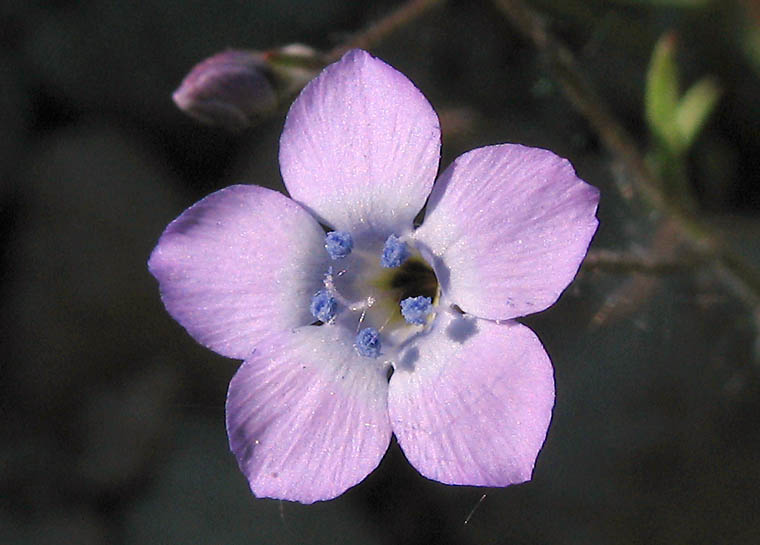
Population 1, March
| < Slender-flowered Hooked Navarretia | Honey-scented Pincushionplant > |
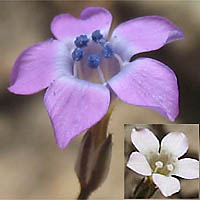
|
Bridges' Pincushionplant Navarretia leptalea TJM1: Gilia leptalea.
Family: Polemoniaceae (PHLOX).
Location: Triunfo Creek Park: Amid scree of north-facing rocky slope above Triunfo Cyn Rd, March 2010. Characteristics: Native, White, Red, Medium, Solitary, Simple, Herbaceous, Annual, Early Spring. Tentative ID
From the note in A N F under the genus Gilia regarding population 1:
NB. There is considerable variation in gilias within range, from site to site and between good and poor rain years, so it is still unclear how many species and subspecies should be listed. For example, in 2010 a population was discovered by SMMNRA staff growing in full sun on a rocky slope along Triumfo Canyon Road in Westlake Village (SMM), occurring with many other native herbs on very thin soil. It has 3-seeded capsules and resembles Gilia but could also be a non-spinescent species of Navarretia, e.g., N. leptalea (A. Gray) L. A. Johnson; unfortunately, the plant has not appeared in subsequent dry years, and needs to be studied more carefully. This unidentified polemon has dark lavender to pink corolla lobes, light violet filaments ca. 0.8 mm long having light blue anthers, and an included pistil with the stigmas positioned several millimeters below the anthers.
And in A N F under Navarretia:
NB. Populations of Navarretia throughout the range need much more study to sort out identifications and degree of variability. Problems to studying this group include the oddity that this group blooms during the dry season, when botanist tend not to be out collecting plants in southern California. Populations are also small and widely dispersed, and are undependable as to in what year they will germinate. Materials from range until now have not received much notice, whereas our populations may provide insight into how broadly species should be defined.
.
|

Population 1, March
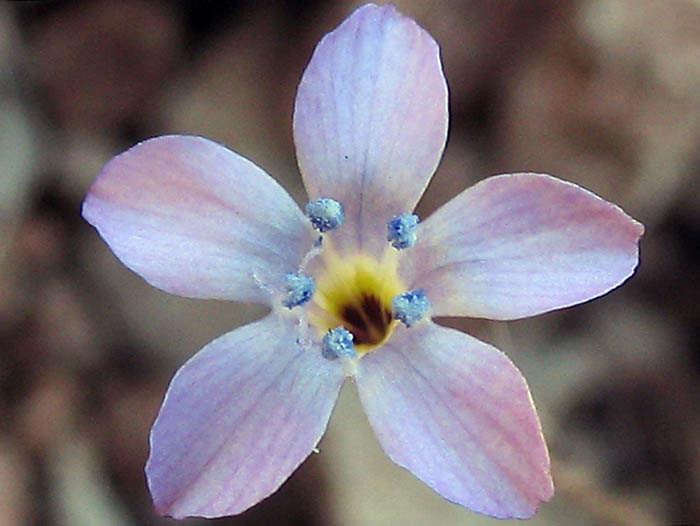
Population 1, April
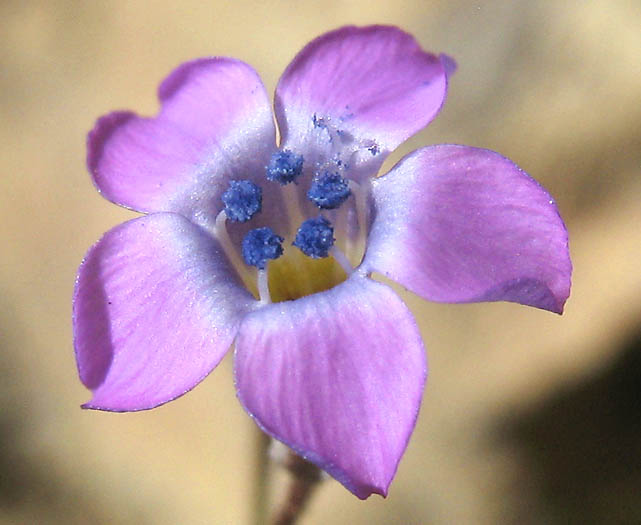
Population 2
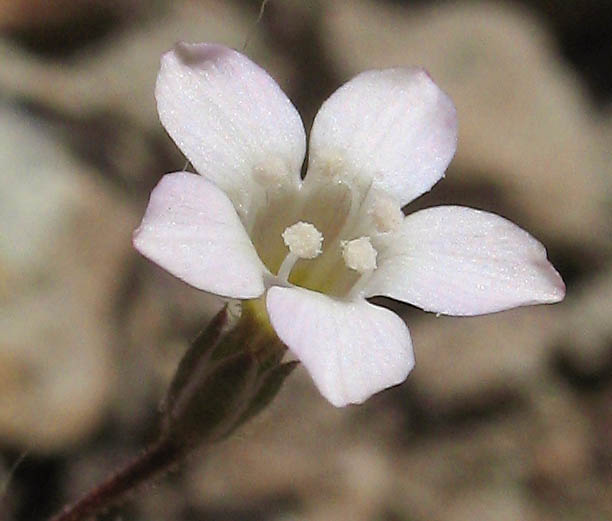
Population 2: most plants have lavender flowers, but a few plants have white flowers.
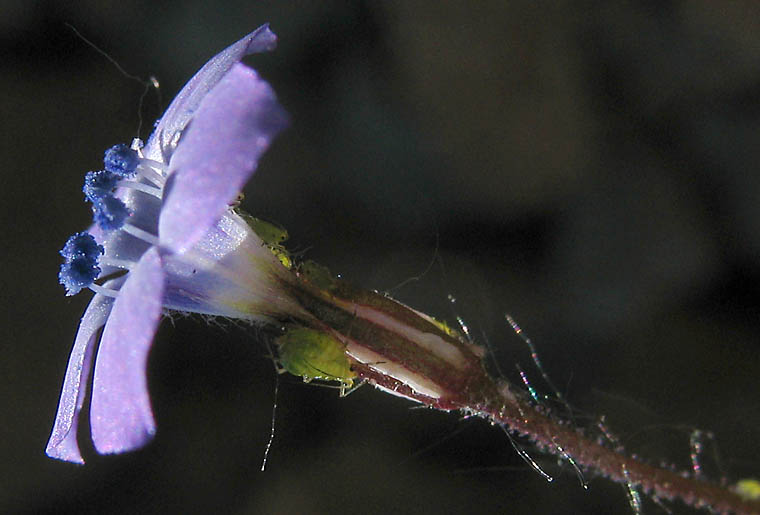
Population 1, March
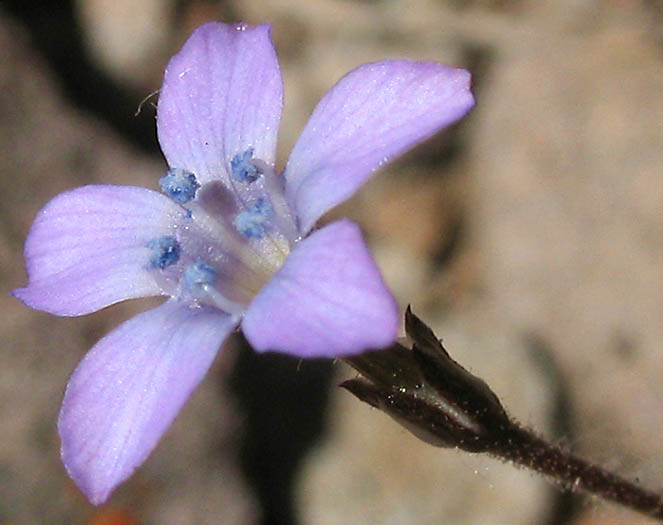
Population 1, April
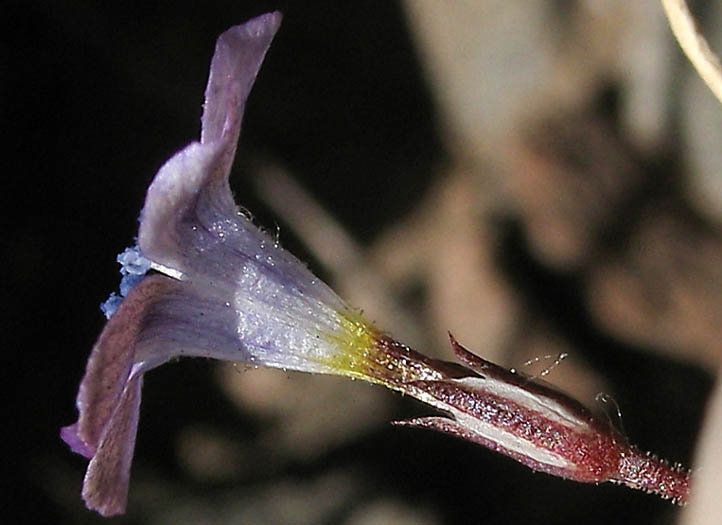
Population 1, April
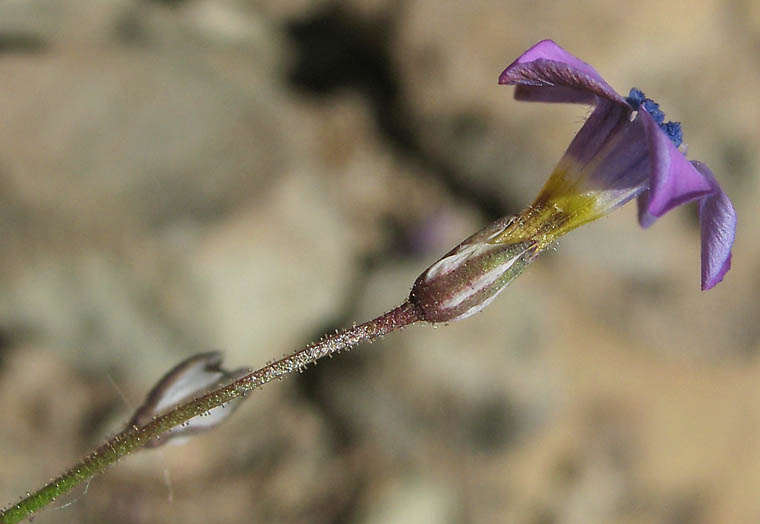
Population 2
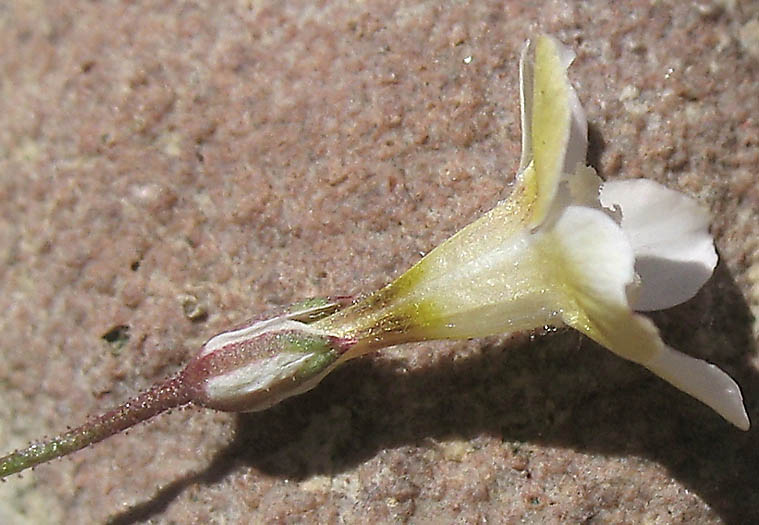
Population 2
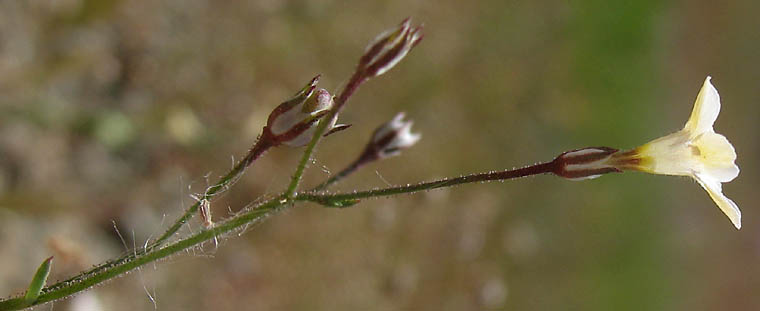
Population 2
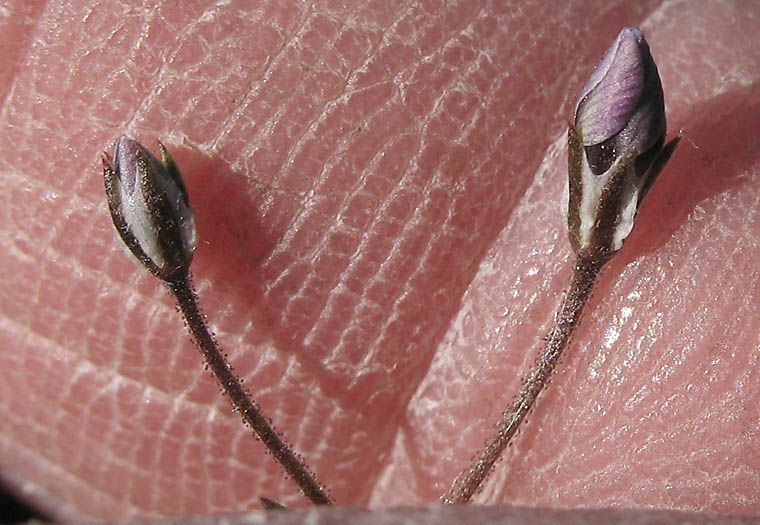
Population 1, March
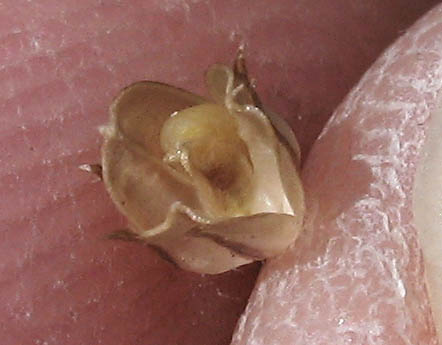
Population 1, April
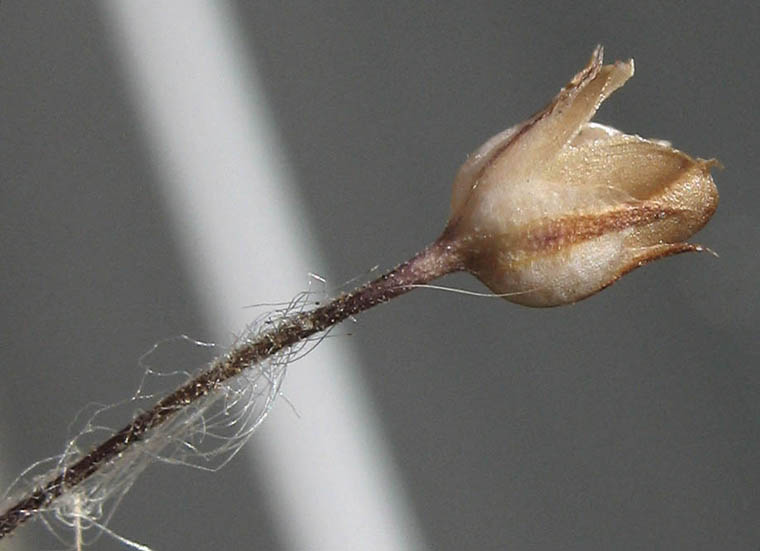
Population 1, April
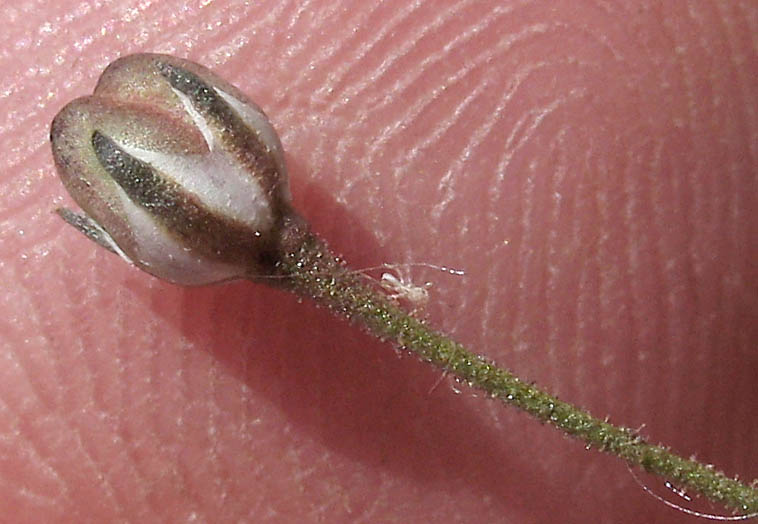
Population 2
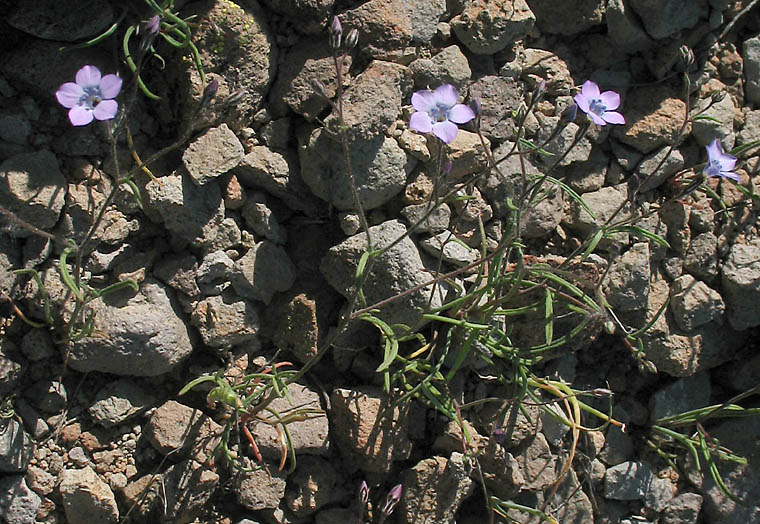
Population 1, March
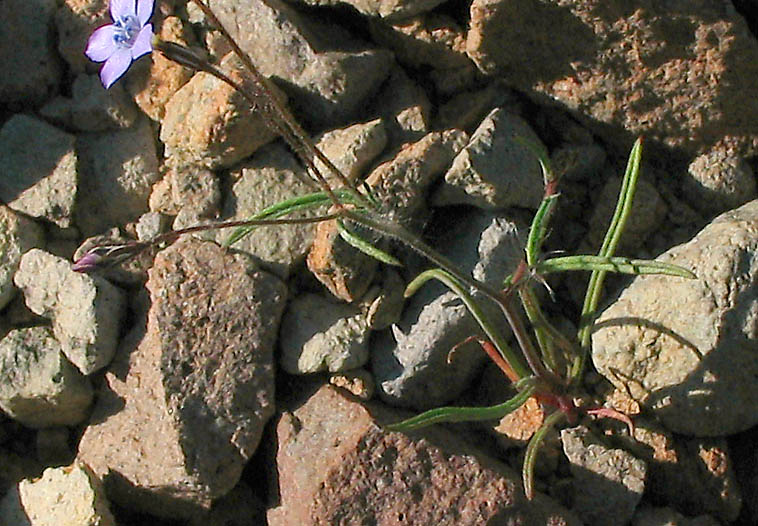
Population 1, March
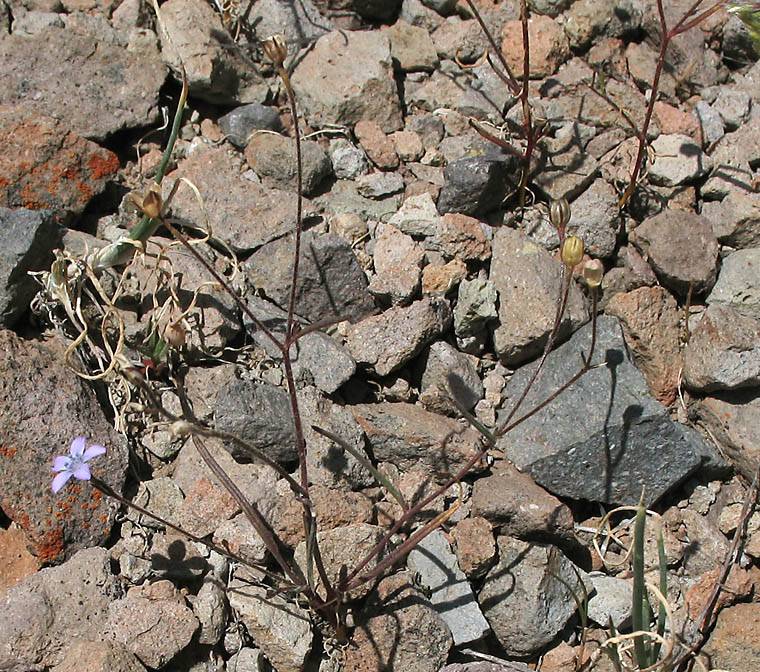
Population 1, April
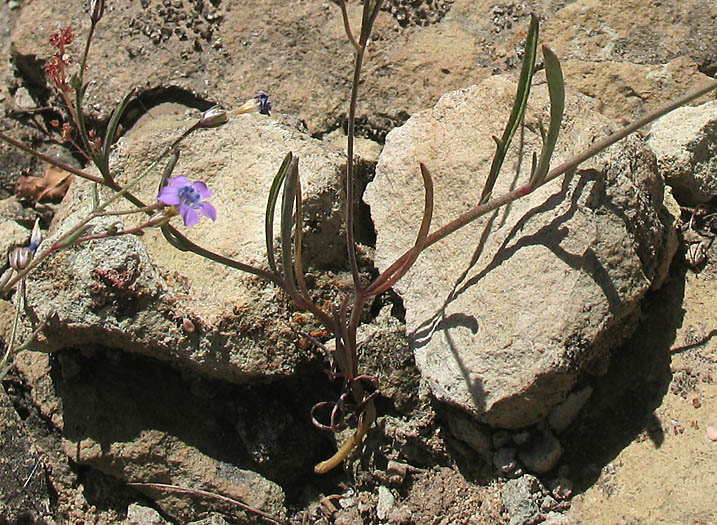
Population 2
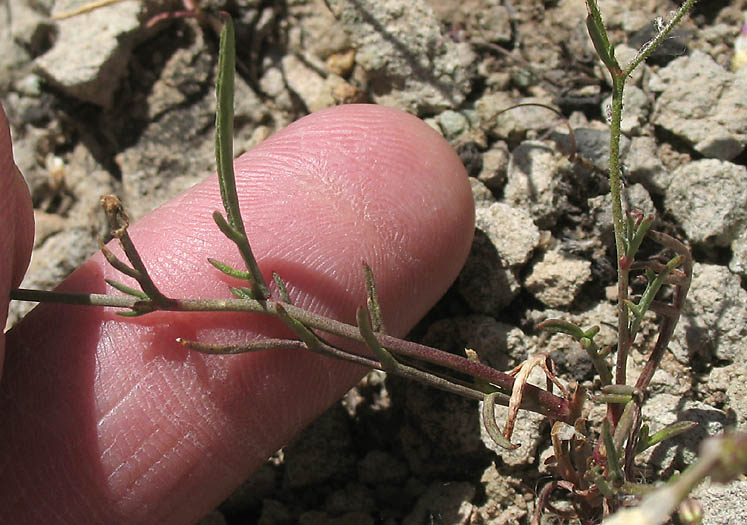
Population 2
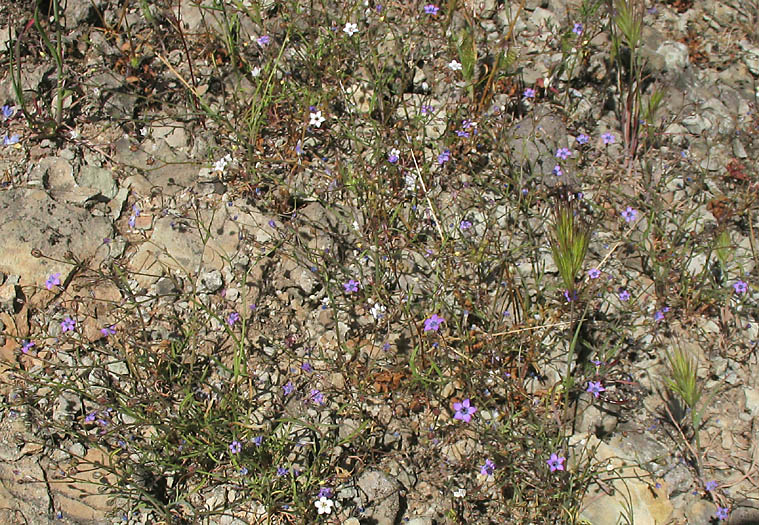
Population 2: mostly lavender with a few white individuals mixed in
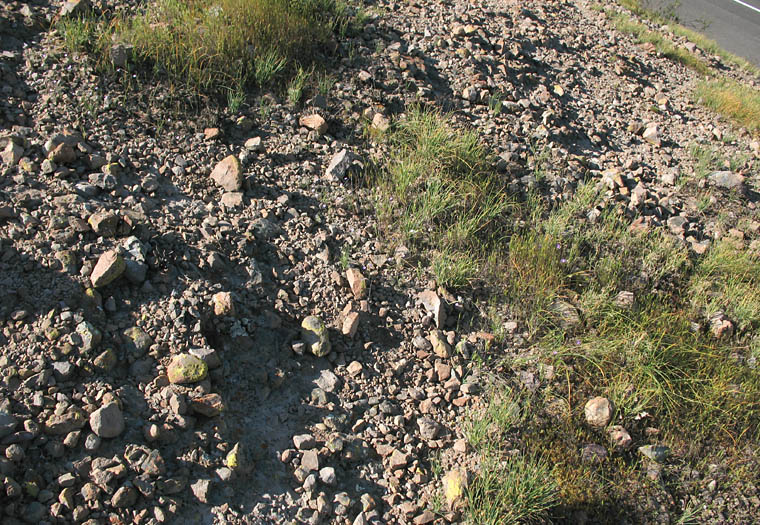
Population 1. Several of the small, slender plants are in the field of view of this photo, but difficult to discern at this scale
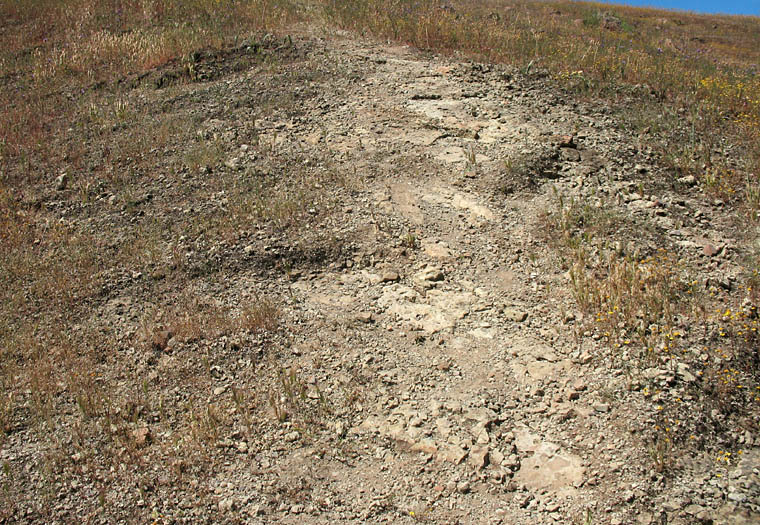
Population 2. Many of the small, slender plants are in the field of view of this photo, but difficult to discern at this scale
|
| < Slender-flowered Hooked Navarretia | Honey-scented Pincushionplant > |
